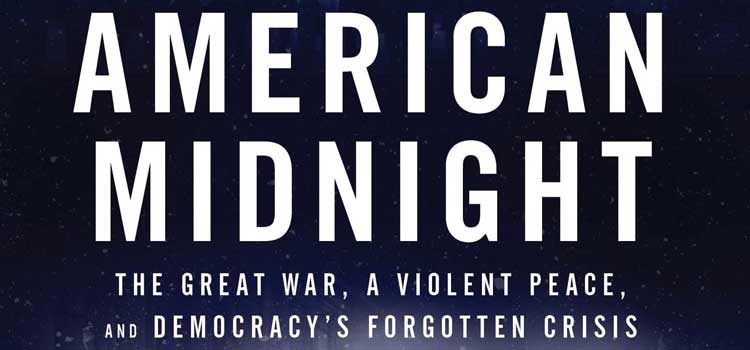Brendan’s Alternate Tagline for American Midnight:
All was not fine on the home front.
Quick synopsis:
A look at the American home front around the time of World War I.
Fun Fact Non-History People Will Like:
On June 5, 1917, all eligible men were required to register for the draft. Although there were concerns on how many would do so, nearly 10 million did so.
Fun Fact for History Nerds:
So much food was needed for the war effort that meatpacking companies saw their profits soar over 400%.
My Take on American Midnight:
It’s hard to review a book which has so many positive attributes but has one major and fatal flaw. The review becomes even harder when the author is Adam Hochschild who wrote one of the best books I have ever read, King Leopold’s Ghost.
The positives of American Midnight are considerable. Hochschild has chosen a very interesting time in American history and has put the focus on an often-ignored part of World War I, the home front. Specifically, he focuses on the unions and war opponents. As you would expect from an exceptional author, the history is sound, the prose is easy to read, and extremely interesting people are highlighted. There is a lot to like about this book and its story.
However, I could not get passed the fatal flaw of this book which is Hochschild’s clear bias when wading through this history. This is not a hidden bias as Hoschschild makes it clear in the prologue what he is going to present and why he is doing so. I have no problem with his theses and often, I was very much in agreement with his observations.
However, the bias can get to the point where it is significantly distracting even when you agree with the author (and I agreed with a good amount of Hochschild’s point of view). An example is when Hochschild mentions a military member (who he is clearly not a fan of) complimenting the Confederate flag. While this is certainly something we would analyze today if a public figure made such pronouncements, mentioning this specific event in 1917 is clearly a manipulative tactic. It would not have been strange to hear or see something like that in 1917, but today it is a hot button item. The history is sound as I have no doubt Hochschild is reporting the truth. However, the choice to include this is clearly meant to inflame today’s reader with something not inflammatory in its own time. To make this choice even more jarring, this particular passage is followed soon after by a positive presentation of someone who was implicated in an attempted murder.
Ultimately, it becomes a question of how distracting you find things like the examples I have mentioned above. History is told from a point of view and there is no way around that. However, these episodes proved too blatant and repeated for me to enjoy the rest of the book which is quite good. If you can glide past such episodes better than I can, then you will enjoy it immensely.
(This book was provided to me as an advance copy by Netgalley and Mariner Books.)
Verdict:
There is a lot to like, but it may lean too hard one way for some readers. Buy it here!


Leave a Reply
You must be logged in to post a comment.